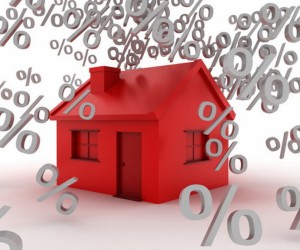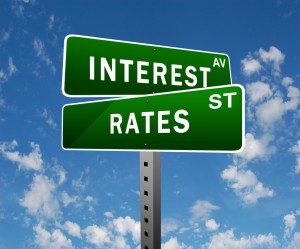The Reserve Bank of Australia has kept rates on hold at 1.5%.
The decision to leave the cash rate on hold today came as no surprise to those following our economy.
To better understand the decision, here are 4 experts views:
Martin Lakos ( Macquarie) comment:
At this month’s monetary policy meeting the Reserve Bank Board decided to keep official interest rates on hold at 1.5%. 
Overall the economy is mixed, with some sectors improving and some not.
Given this, it’s Macquarie’s view that the current level of interest rates will be with us until mid-2018, and given the level of household debt, the RBA is likely to tread lightly.
The next RBA board meeting will be held on Tuesday 3 October.
Source: Macquarie
Tim Lawless (Corelogic) comments:
The ongoing evidence of slower housing market conditions were likely one of the key topics of conversation for the RBA when they held the cash rate at the historically low level of 1.5% in September. 
CoreLogic home value figures released last Friday confirmed that the pace of capital gains has slowed in Sydney and Melbourne.
These are the two housing markets that have caused the most concern for policy makers because of the previously high rates of capital gain that had been running since early 2012, coupled with record high levels of household debt and high concentrations of investment.
Surging dwelling values in Sydney and Melbourne had prompted some market commentators to call for a rate hike, however tighter credit policies have so far done much of the heavy lifting to cool the exuberance across Australia’s two largest housing markets.
With growth conditions across the housing sector moving back to a more sustainable level of growth, the likelihood of a cash rate hike in 2017 appears highly unlikely.
Record high household debt remains a key concern for policy makers.
Furthermore, wages growth is continually subdued.
With the household debt to income ratio tracking at 190%, households have become more sensitive than ever to the cost of debt and the RBA will likely be very mindful of the capacity for Australian households to service their debt without a broader dent on household consumption.
Mortgage rates are already pushing higher for investors and interest only borrowers, which is likely a key contributor to the slower housing market conditions in Sydney and Melbourne.
Importantly, mortgage rates for owner occupiers are generally unchanged, and for some products have actually fallen over recent months.
The hold decision will be welcome in markets outside of Sydney and Melbourne where growth conditions have generally been mild to negative and the macro prudential conditions being imposed nationally due to the strength of these two cities is generally seen as a negative for other housing markets across the country.
Source: www.corelogic.com.au
Comments from the RBA:
At its meeting today, the Board decided to leave the cash rate unchanged at 1.50 per cent.
Conditions in the global economy are continuing to improve. 
Labour markets have tightened further and above-trend growth is expected in a number of advanced economies, although uncertainties remain.
Growth in the Chinese economy is being supported by increased spending on infrastructure and property construction, with the high level of debt continuing to present a medium-term risk.
Commodity prices have risen recently, although Australia’s terms of trade are still expected to decline over coming years.
Wage growth remains low in most countries, as does core inflation.
Headline inflation rates have declined recently, largely reflecting the earlier decline in oil prices.
In the United States, the Federal Reserve expects to increase interest rates further and there is no longer an expectation of additional monetary easing in other major economies.
Financial markets have been functioning effectively and volatility remains low.
The recent data have been consistent with the Bank’s expectation that growth in the Australian economy will gradually pick up over the coming year.
The decline in mining investment will soon run its course.
The outlook for non-mining investment has improved recently and reported business conditions are at a high level.
Residential construction activity remains at a high level, but little further growth is expected.
Retail sales have picked up recently, although slow growth in real wages and high levels of household debt are likely to constrain future growth in spending. 
Employment growth has been stronger over recent months and has increased in all states.
The various forward-looking indicators point to solid growth in employment over the period ahead.
The unemployment rate is expected to decline a little over the next couple of years.
Wage growth remains low.
This is likely to continue for a while yet, although stronger conditions in the labour market should see some lift in wages growth over time.
Inflation also remains low and is expected to pick up gradually as the economy strengthens.
The Australian dollar has appreciated over recent months, partly reflecting a lower US dollar.
The higher exchange rate is expected to contribute to the subdued price pressures in the economy.
It is also weighing on the outlook for output and employment. 
An appreciating exchange rate would be expected to result in a slower pick-up in economic activity and inflation than currently forecast.
Conditions in the housing market continue to vary considerably around the country.
Housing prices have been rising briskly in some markets, although there are signs that conditions are easing, especially in Sydney.
In some other markets, prices are declining.
In the eastern capital cities, a considerable additional supply of apartments is scheduled to come on stream over the next couple of years.
Rent increases remain low in most cities.
Investors in residential property are facing higher interest rates.

There has also been some tightening of credit conditions following supervisory measures to address the risks associated with high and rising levels of household indebtedness.
Growth in housing debt has been outpacing the slow growth in household incomes.
The low level of interest rates is continuing to support the Australian economy.
Taking account of the available information, the Board judged that holding the stance of monetary policy unchanged at this meeting would be consistent with sustainable growth in the economy and achieving the inflation target over time.
Source: www.rba.gov.au
Comments from: RateCity
The cash rate remained steady for the 13th month in a row however home loan rates continue to diverge as banks keep up with increased regulation. 
Four distinct loan tiers have emerged as a result of APRA’s requirements, and RateCity research shows with significantly lower rates for owner-occupiers and people opting to pay principal and interest.
The spread between the tiers is now 65 basis points.
Average home loan rates:
Owner-occupiers, principal & interest: 4.35%
Owner-occupiers, interest-only: 4.58%
Investors, principal & interest: 4.79%
Investors, interest-only: 5.00%
RateCity money editor Sally Tindall said traditional home owners have been the big winners.
“Australians opting to live in their properties and pay down their debt can nab a rate as low as 3.44 per cent.
“Investors on the other hand are hard-pressed to find anything under 4 per cent.
“While there are 510 owner-occupier loans under 4 per cent, investors have just 49 to choose from.
“Those who have stuck it out with investor interest-only loans have, on average, copped a 40-basis point rise over the last 12 months, adding $116 per month to the cost of a $350,000 mortgage.
“All of this, as the cash rate remains on hold.
It shows when it comes to monetary policy, the Reserve Banks isn’t pulling all the strings,” said Ms Tindall.
Lowest investor principal and interest rates: 
- Reduce Home Loans, Investor RateBuster (P&I): 3.74%
- Homestar Finance, Investment loan (P&I): 3.79%
- Pacific Mortgage Group, Investment loan (P&I): 3.79%
Lowest investor interest-only rates:
- Homestar Finance, Investment loan (interest-only): 3.94%
- Reduce Home Loans, Investor RateBuster (interest-only): 4.04%
- Pacific Mortgage Group, Investment loan (interest-only): 4.09%
Note: Investor mortgage costs based on a $350,000 mortgage, over 30 years paying the first 5 years as interest-only
Source: RateCity.com.au
from Property UpdateProperty Update https://propertyupdate.com.au/4-experts-comment-on-the-september-2017-rba-interest-rate-decision-video/
![[Imported] WP Advertize it Free Strategy ad 10 July 2014 (Desktop #44800)](https://propertyupdate.com.au/wp-content/uploads/2014/07/m-propertyinvestors-18July2014.png)

No comments:
Post a Comment